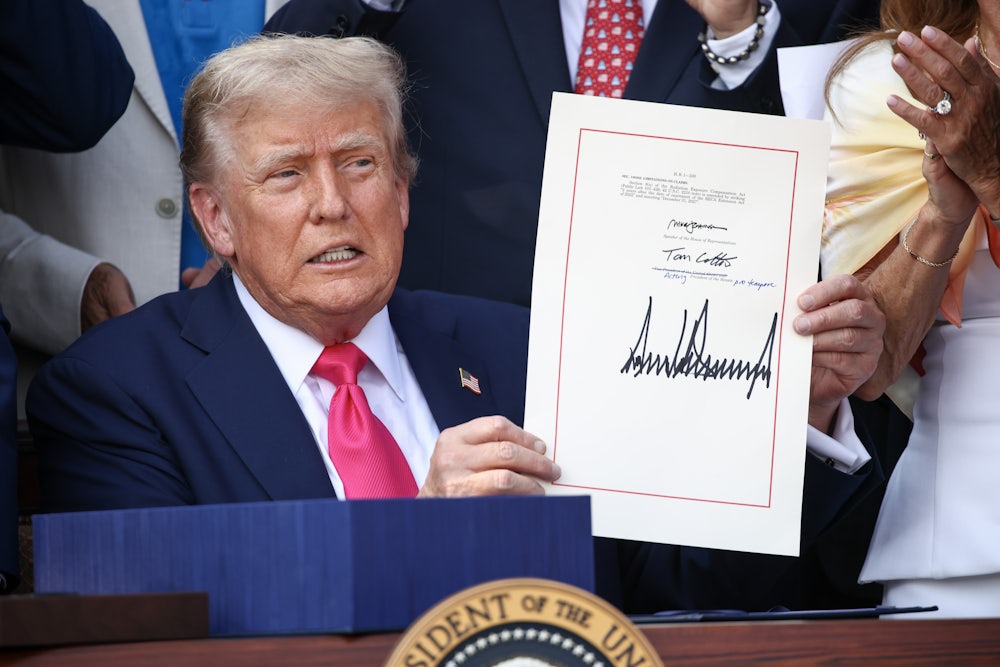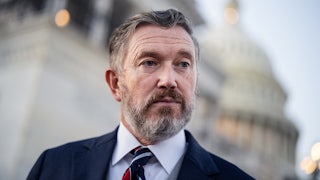PAYGO is not a term that crosses many lips in daily discourse. But it may soon be used more widely, as its impact resonates in the aftermath of the passage of the so-called One Big Beautiful Act. While the enormous and damaging cuts in Medicaid have dominated discussion since the bill was enacted—cuts that will take millions of Americans off of health insurance, force the closure of many rural hospitals and nursing homes, and likely put enormous increased pressure on emergency rooms across the country—another shoe is soon to drop. And that is major cuts in its sister program, Medicare.
That reality has gone unmentioned in most media discussion of the changes soon to rock the American health care system. But in fact, the cuts in Medicare will begin even before those in Medicaid—ones conveniently put off by congressional Republicans until after the 2026 midterm elections. How is this possible, since Medicare is exempted from cuts in the budget reconciliation process used to pass the OBBB? The answer is in a longstanding practice, originally enacted in 1990 and built into the law and congressional rules, that requires pay-as-you-go budgeting—hence, PAYGO.
PAYGO is triggered when budgets over five- and 10-year periods add to deficits. And this “beautiful” bill does so bigly—to the tune of $3.4 trillion over 10 years. That means automatic cuts, known in the trade as sequesters, across much of the federal budget. Ironically, Medicaid, along with Social Security, Supplemental Security Assistance (SSI), and SNAP (food stamps) are exempt from sequesters. But Medicare is not. And it faces a whopping $533 billion in cuts over the next decade. The cuts, to be sure, are limited to no more than 4 percent of the program’s budget each year. But that is not a nominal sum, and it will cause devastating problems, and not just for seniors. Along with the massive cuts in Medicaid and the cuts to coverage under the Affordable Care Act, we are headed for a triple whammy against health care in America.
What could happen to Medicare if and when these cuts occur? First, payments to hospitals, physicians, and health care providers will be hit. Hospitals, and not just ones in rural areas, are already stretched thin. More cuts means closures or cutbacks in services— when any hospital closes, every other hospital in the area feels it; already overloaded emergency rooms in hospitals will be even more overloaded. And with payments already low, further cuts in Medicare reimbursements may mean more providers refusing to accept Medicare entirely, which will reduce access to care. Seniors may see higher out-of-pocket costs for drugs and medical devices. Those using Medicare Advantage plans may see cutbacks in dental, vision, and hearing coverage.
Then there is the Medicare Savings Program (MSP), which provides assistance for the poorest—those known as dual eligibles, who qualify both for Medicaid and Medicare, including many with disabilities. The program serves more than 10 million Americans. For most of them, Medicare is the primary insurer, with Medicaid secondary, and they get assistance to cover more of their Medicare premiums and out-of-pocket costs. Congress and the Biden administration had acted to streamline MSP to cut red tape and make the program more efficient and easier to use for the dual-eligible population—and save both recipients and states money through the efficiencies. But the reconciliation bill mindlessly delayed most of those improvements until 2034, causing more pain and more costs along the way.
Many people think of Medicare as a program for seniors, Medicaid as a program for the poor, both detached from the rest of the population. Of course, that’s not true, as many other parts of the population are actually served by those federal programs. And while we have a mixed health care system with many different and disparate component parts, they are all interrelated, much as our organs are related in our bodies. Changes in one part have a ripple effect through all the rest. And these cuts will ultimately profoundly affect all Americans, from those in the provider community to those of us who rely on them to protect and heal us.
Of course, Congress can act to block the Medicare cuts, something it has done in the past. But radical Freedom Caucus Republicans, who have been trying for years to get their hands on Medicare, may see this as their only chance, and could well have enough clout to ensure the sequester takes effect.
Republicans have tried over and over to privatize and reduce Medicare and Social Security, and to slash Medicaid to the bone. They mostly have failed. This time is different. DOGE has already made its impact felt, cutting Social Security personnel and making it difficult for seniors to call in with questions or problems, including missed monthly payments that for many are their only source of income. Now the combination of the reconciliation “One Big Beautiful Bill” and the PAYGO cuts in Medicare will add to the pain faced by those benefiting from these popular and essential programs. This is not about waste, fraud, and abuse. It is about the fundamental safety net for the majority of Americans whose lives will be shaken by mindless and cruel cuts.
As always, there is a chance that voters will not make the connection between Republican responsibility for the pain that will ensue, that the right-wing wind machine, led by Fox, talk radio, and social media will blame Biden and Democrats or just become more angry at government, insurers and medical providers. Democrats need to abandon their usual belief that the actions will speak for themselves, and work relentlessly to make clear why this is happening and who is responsible.
Democrats in Congress need to hold hearings outside hospitals in red districts and states, talking to doctors and seniors about what pain they are facing, while doubling down on their successful practice of holding town halls in those red districts. They need to use every opportunity on every media outlet, on House and Senate floors and in committees, to talk about what is happening and why. They need to go to nursing homes, assisted living facilities and elsewhere to highlight the damage. And they need to educate voters on why this matters to all of us, not just seniors. Just as Important, they need to make the connection between these mindless and cruel cuts and the real priority of Trump and Republicans in Congress—to give more and more tax cuts to the wealthiest among us.






